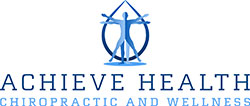Trampoline Injuries In Children
Trampoline jumping poses a high risk of injury for both children and adults. Falling off a trampoline or using a trampoline incorrectly can result in strains, sprains, fractures and other injuries — including potentially serious head and neck injuries. In fact, the risk of injury is so high that the American Academy of Pediatrics (AAP) says that trampolines should never be used at home or in outdoor playgrounds. The AAP supports limited use of trampolines in supervised training programs, such as gymnastics and diving classes. But even then, strict safety guidelines must be followed.
If you choose to buy a trampoline despite the risks, follow these safety rules:
- Use safety nets and pads. Install a trampoline enclosure — a special net designed to surround the trampoline — and cover the trampoline’s springs, hooks and frame with shock-absorbing pads. Regularly check the equipment for tears and detachments.
- Place the trampoline on level ground. Make sure it’s a safe distance from trees and other structures. Better yet, place the trampoline in a pit so the jumping surface is at ground level.
- Limit trampoline activity. Allow only one person to use the trampoline at a time — and never without supervision. Don’t allow somersaults or other potentially risky moves on the trampoline.
- Discourage unsupervised jumping. Don’t install a trampoline ladder, which could tempt young children to use the trampoline alone.
Trampoline injuries led to 98,000 trips to the emergency room last year alone. Children are the most frequent victims, but adults are also getting hurt, sometimes with devastating consequences.
The best way to protect children is to encourage parents not to use a trampoline or at least to supervise the child at all times. There are several regions of the spine with which we should be concerned when a child has been injured from trampoline usage. Upper cervical trauma, sacral injury (similar to repetitive-stress syndrome) and flexion-extension injury to the lumbar spine all may be consequences of trampoline use. Should the child have moderate to severe complaints, it warrants taking radiographs and including orthopedic and neurological testing.
The chiropractic’s approach to healthcare is focusing on the patients overall health. Chiropractors provide natural, drugless, nonsurgical health treatments that solely rely on the body’s inherent recuperative abilities. Chiropractors follow a standard routine to get information needed to diagnose and treat patients. They take patients health history; conduct a physical and an orthopedic examination. Some chiropractors use additional procedures in their practice, including therapies using heat, water, lights massage, ultrasounds and electric currents. They may also utilize equipment such as straps, tape, braces, or shoe inserts.
Obviously, we all as parents want what’s best for our children. We want them to be happy and most importantly, we want them to be healthy. That means making chiropractic checkups as a regular part of their health care routine.


